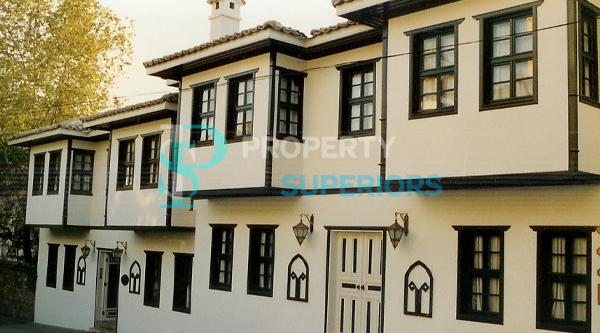
A Turkish house can be defined as a house that Turks have lived in throughout its history. Their settlements have changed a lot since they first appeared on the stage of history. They spread from Central Asia to the Balkans, from North Africa through the Arabian Peninsula to the northern coast of the Black Sea, and established various states. In our definition of Turkish houses, we can include houses inherited from the Ottoman Empire, some remaining examples of which date back to the 17th century, and all houses with the following characteristics:
Original room shape: The room is the most important part of a Turkish house. Its properties have hardly changed.
Floor Plan Layouts: The most unique types of floor plans are those outdoor or open plan sofas that use protrusions and eyvans. The real thing about these floor plan types is the independence of the room, which is not adjacent but separated from the other rooms by a sofa extension. Types of plans with central sofas appeared in these periods.
Multi-storey buildings: Most houses have at least two stories. The upper level is the main living area, showing the details of the floor plan. The ground floor usually has a tall stone wall, almost like a fortress. The upper level extends across the street.
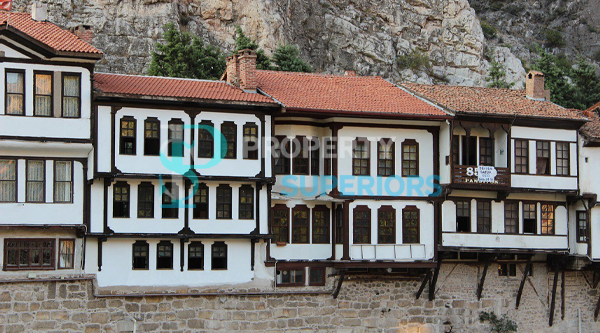
Roof Shape: The roof is sloped on all four sides and has a simple shape with no indentations or extensions. The cornice is wide and horizontal.
Construction: The basic system of construction is a wooden frame with infill material or turner and plaster.
All of these characteristics are the same for all houses, regardless of the social class of their owners. Wealth is only reflected in the number of rooms and decoration. This type of house can be likened to a seal instilled in Turkish culture. It is immediately distinguishable from houses of other cultures.
There is relatively little research on Turkish houses. Sedat Hakkı Eldem realized early on the importance of Turkish houses, and as a young professional he started compiling all the documents he could find, conducting the earliest, most comprehensive and capable research in this field . Some of them were not published until shortly before his death. Therefore, we can study the last important example of Turkish houses from his book.
Archaeologist Mahmut Akok also contributed to the field with his survey drawings and articles on houses in different regions. In the 1950s, the Faculty of Architecture, Istanbul Technical University prepared several papers on interior design in large cities. After almost 20 years of hiatus, recent doctoral dissertations and research have brought up the topic again, focusing on the use of more scientific methods to investigate small towns.
The main reason for this recent interest is the realization that traditional housing models are rapidly disappearing and losing their character with the advent of new construction. Still, Turkish houses are an amazing subject. It is still possible to encounter admirable examples of Turkish houses that have not yet been discovered. Most of them may not have surveyed the floor plan or may not have even photographed it properly.
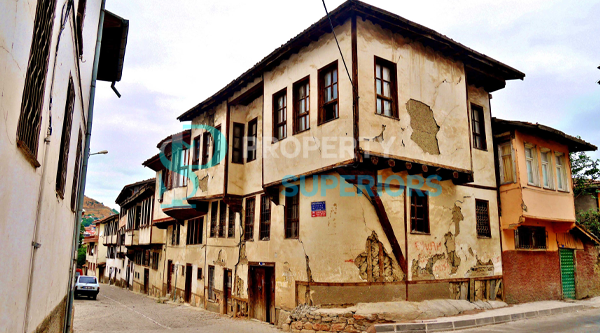
General Appearance of a Turkish House
The ground floor is separated from the street by a stone or mud wall, and the upper floor is on load-bearing stone walls or wooden columns, a common type of house within the geographic boundaries of Turkish houses. The upper level is constructed with a wood frame structure. If anything, the middle floors have low ceilings, which can be mezzanine floors or entire floors. Over time, the top floor became more and more complex, with multiple projections and a large number of standard-sized windows. In earlier houses, the windows were not glazed, but eventually, with the widespread use of glass, windows began to have panes that open on both sides. Vertical sash windows (sash windows) only appeared after Western influence. The cookie-cutter windows, with their recurring rhythms, create a sense of unity not only in each home, but throughout the city. The four sides of the roof are always sloped. This is one of the main features of Turkish homes.
Room
The room is the most important unit in every Turkish house. In each room, you can sit, lie down, wash, eat, and even cook. All rooms have similar characteristics. The size may change, but the basic properties will not. These are closely related to lifestyles that have not changed significantly over time. Therefore, the space also remains the same. An arrangement has been developed that allows modification to meet the requirements of all the different functions described above. This arrangement is based on the prevailing customs during the nomadic period. Tents, which were living units at the time, have now been replaced by rooms. The tent is also not strictly divided into areas allocated to different functions. In a room, areas are separated from each other by partition walls or semi-partitions. The interior of the room is carved to the dimensions required for human activity. With the small amount of movable furniture it contains, the room can fulfill different functions as needed. When they can no longer be used, they are immediately cleared. The bed is housed in a built-in closet. They are placed before bed and put away again in the morning. When it is time to eat, take the tablecloth, table legs, and copper or wooden table top out of the cabinet after dinner.
So the middle of the room is always empty. The sofa used as a seat is placed close to the wall. The meal and sleeping arrangements are the same in palaces and tents. The multifunctional use of the room and its unfurnished areas are also characteristic of Japanese houses. Interestingly, Japanese furniture did not borrow from China, but borrowed some cultural and functional features from China. Central Asia, one of the two origins of the Japanese, inevitably comes to mind in this context.
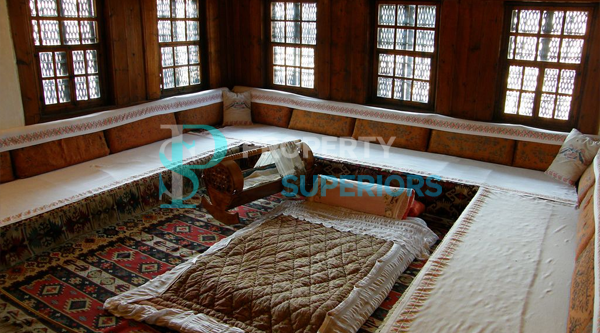
Plan Types of Turkish Houses
The layout of a Turkish house is formed by arranging the room around a sofa. A room is a living unit that is basically the same in shape, size and composition. On the other hand, all the different aspects of a sofa can be different. Because of this, the typology of a house is often defined by the sofa inside.
Turkish house floor plan types were first classified by S. H. Eldem. The most important of them is, in the correct order of development: outer sofa, inner sofa and middle sofa type.
Outdoor Sofa Floor Plan Type: This is one of the oldest Turkish house types and there are many good examples of it. Although they exhibit great diversity, there is still very little symmetry. The sofa is exposed and there are no walls to hide it. It is a good reflection of the Turkish way of life with its close connection to nature and the transition from nomadic life in tents to permanent settlements. When the weather is nice, especially in summer, the sofa is a busy living and productive area. In this floor plan, each room represents a tent, while the sofas represent a partially controlled natural environment. The colonnade of the sofa was not glazed until much later. The richest examples are those with bay windows and eyvans. Until recently, the corner sofa type had the sofa enclosed on the outside. Such plans continued into the 19th century.
Indoor sofas and mid sofa types: These sofas originated in the 18th century, but were most commonly used in the 19th century. Increased urban populations have resulted in smaller parcels with higher land values, resulting in denser and more introverted floor plans. The desire for a more comfortable lifestyle free from dust and cold and the need to be able to use a sofa year-round is one of the social reasons for preferring this type. This compact floor plan accommodates several rooms, and when they are arranged side by side, a few walls are redundant, resulting in a certain economy. Another view is that the central sofa plan has been used since Central Asia; in times and Anatolian Turkish architecture, it was mainly used in madrasahs, mosques and mansions. It was revived in the 18th century, first in the homes of the ruling class in the big cities and, over time, in the countryside. The inner sofa type has only one plane symmetry, while the central sofa type generally exists in two planes that are perpendicular to each other.
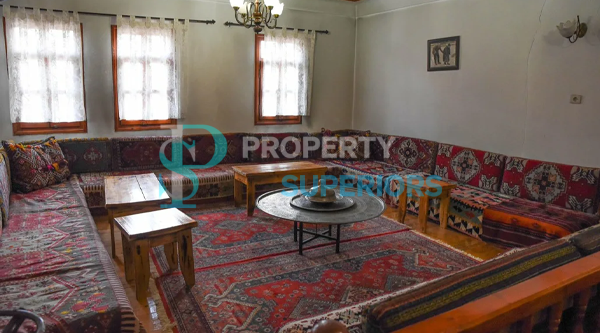
Design Method
Once this type of home is developed, it spreads over the areas described in the previous chapters, although there can be large climatic differences between regions. Finding the same open sofa in the Antalya home and the Kutahya home is a clear sign of a strong design heritage. This structure provides summer and winter use in the same house, so the same house type can be used in many different climatic regions. However, this does not mean that the Turkish house is a building where the same archetype is used everywhere. Home design is influenced by factors such as lifestyle and production, available building materials and building techniques influenced by their use, the topography and conditions of the property, and the structure and wealth of the home. Another important factor is the area's proximity to the nearest cultural center. The most influential cultural center is the capital Istanbul. Edirne and other major cities followed. The degree to which urban fashion manifests in other areas depends largely on the density of administrative and commercial relationships between them. There has always been a trend to imitate the capital's style, although this is rarely the case in all places at once. For the most part, the capital has been transformed into a new or different architectural style while the rural center adopts the urban style.
Construction Method
The main building material of Turkish houses is wood, and the main construction method is generally wood framing. Timber frame structures are compatible with the forest cover of the Anatolia and Thrace regions and are also desirable since these regions are located within seismic fault zones. In addition, this method allows for rapid construction and therefore meets the needs of a constantly evolving and evolving society. For the same reason, the details of wood construction are very simple; simple joins and pinnings are preferred over complex join details. The expansive wooden elements and elaborate details found in German, British or Japanese communities are not present in Turkish houses. It's no coincidence that the same simple architectural details can be found in the United States, where people have historically traveled west. This construction also made it possible to rebuild in a short period of time when the entire dormitory burned down. The way people view life also influences the choice of wood construction: human life is fleeting; even temporary construction is natural. There is no need to be greedy for worldly possessions. Because of this point of view, repairing or renovating a home when it is dilapidated can help update the style and meet the growing needs of the family. On the other hand, public buildings and religious buildings are built for as long as possible.
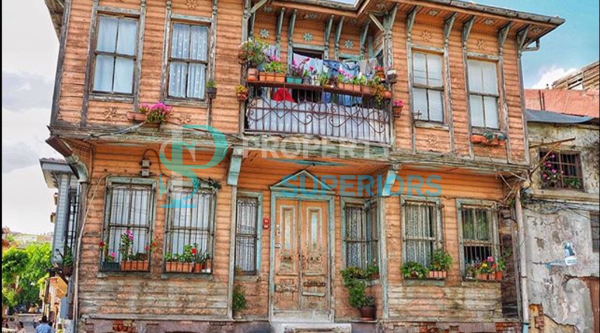
The wood-frame construction also allows for more windows, building overhangs and wider eaves. This provides control over climatic conditions and enables the building to breathe humid climates, which in turn helps prevent condensation and humidity in the room.
The wood frame structure can meet the diverse needs of different artistic directions. During the Baroque period, curved stripes were made by carving wood and were optimally applied. During the classicism period, wooden houses could also use half-buried columns, triangular heads, and simple square arches. The era of Sultan Abdul Hamid can be seen as a revival of wooden houses. Art Nouveau was completely successful in adapting wooden architecture. New curves following Erenköy's style are also appreciated and applied. At the end of the 19th century, all these new trends were combined with traditional Ottoman art to create unique examples of woodwork. The combination of planks, slats and profiles create a proportional and rhythmic division of the façade, enhanced by effects of light and shadow, and sometimes by coloured decorations, paintings and slats.
Related posts:
"Smart Homes" are homes that have the latest technology. All of the parts of the house are controlled by technology, so they are fully automated. That means you can control everything in your home with the touch of a button,...
The process of interior design supervision involves the designer overseeing the execution of all tasks, including design, selecting personnel and materials, renovating existing spaces, and completing the project as planned.




 New provisions for obtaining Turkish citizenship through real estate ownership
New provisions for obtaining Turkish citizenship through real estate ownership
 Turkish Real Estate Rental Law 2024
Turkish Real Estate Rental Law 2024
 Ways to obtain Turkish citizenship through investment 2024
Ways to obtain Turkish citizenship through investment 2024
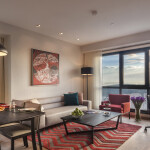 How to choose an ideal apartment in Turkiye?
How to choose an ideal apartment in Turkiye?
 Turkish passport... Extraction method and fees 2024
Turkish passport... Extraction method and fees 2024
